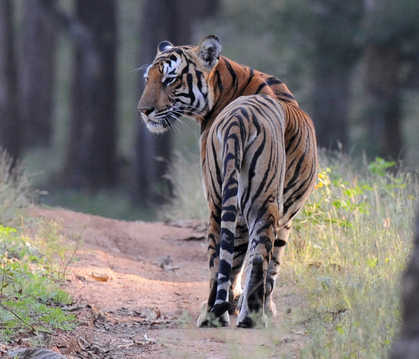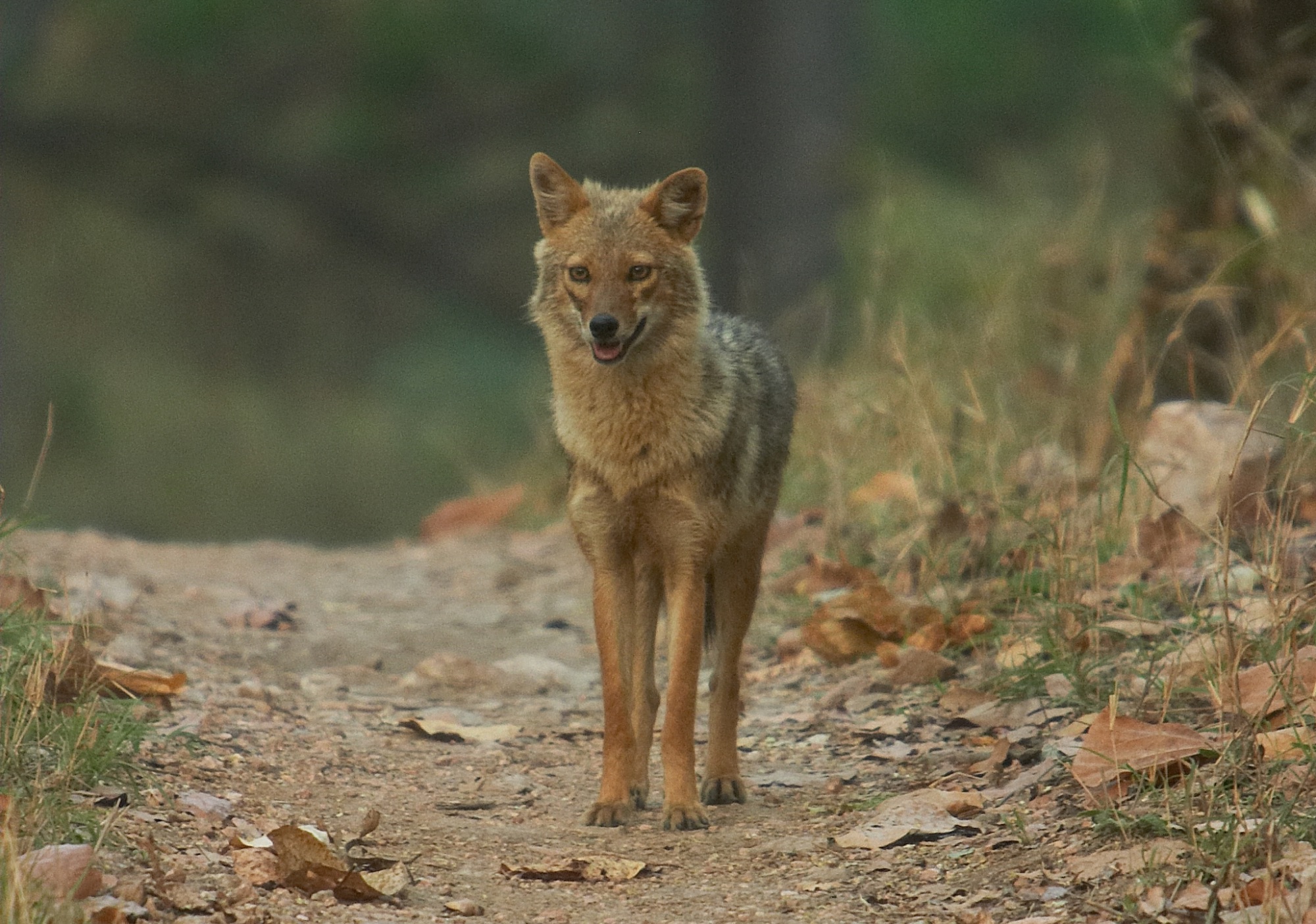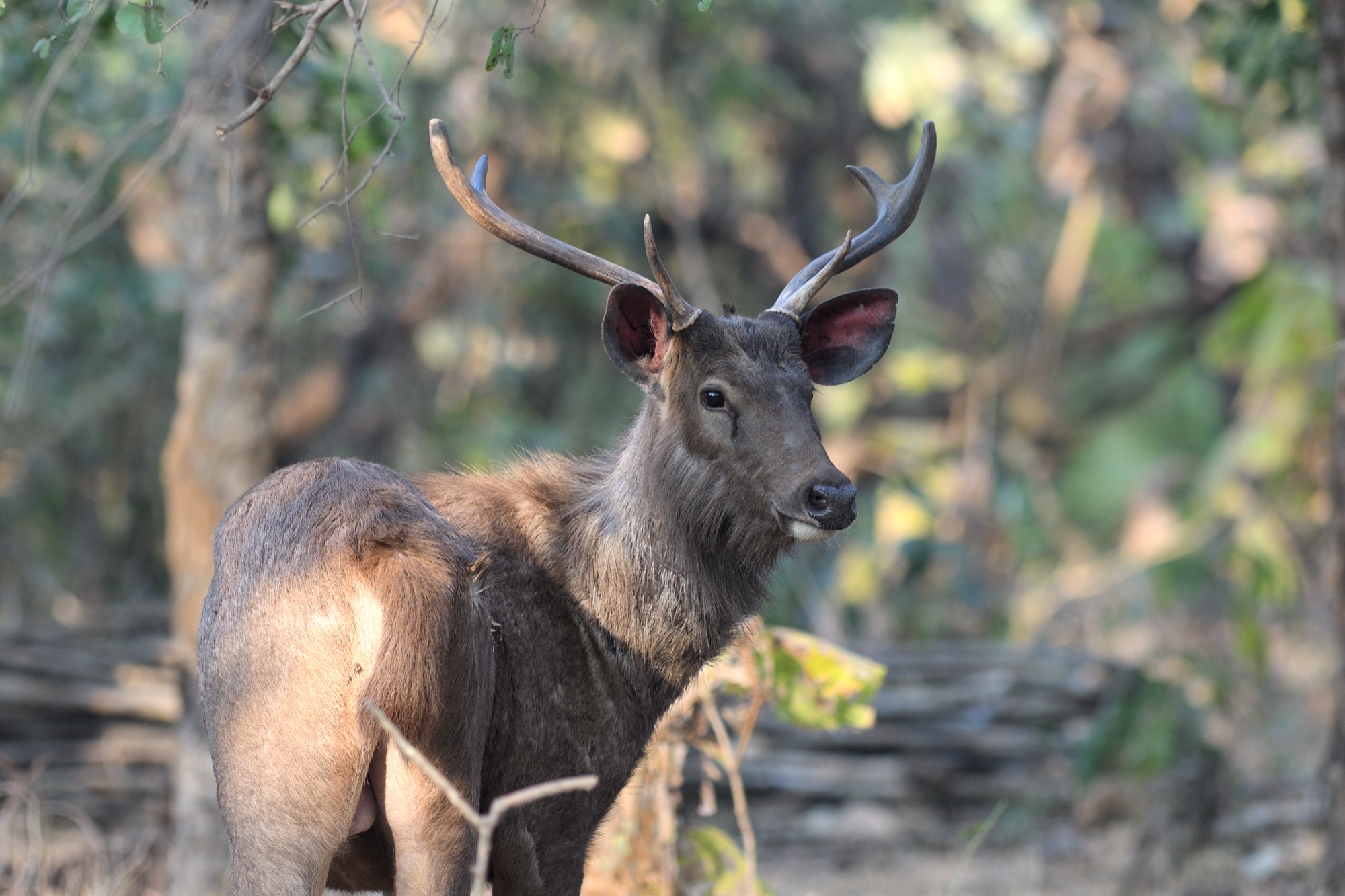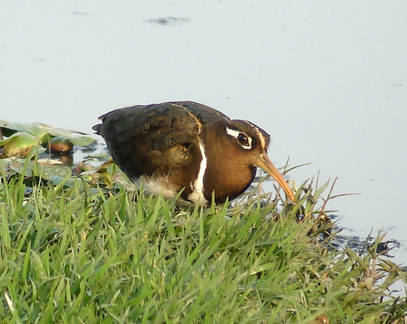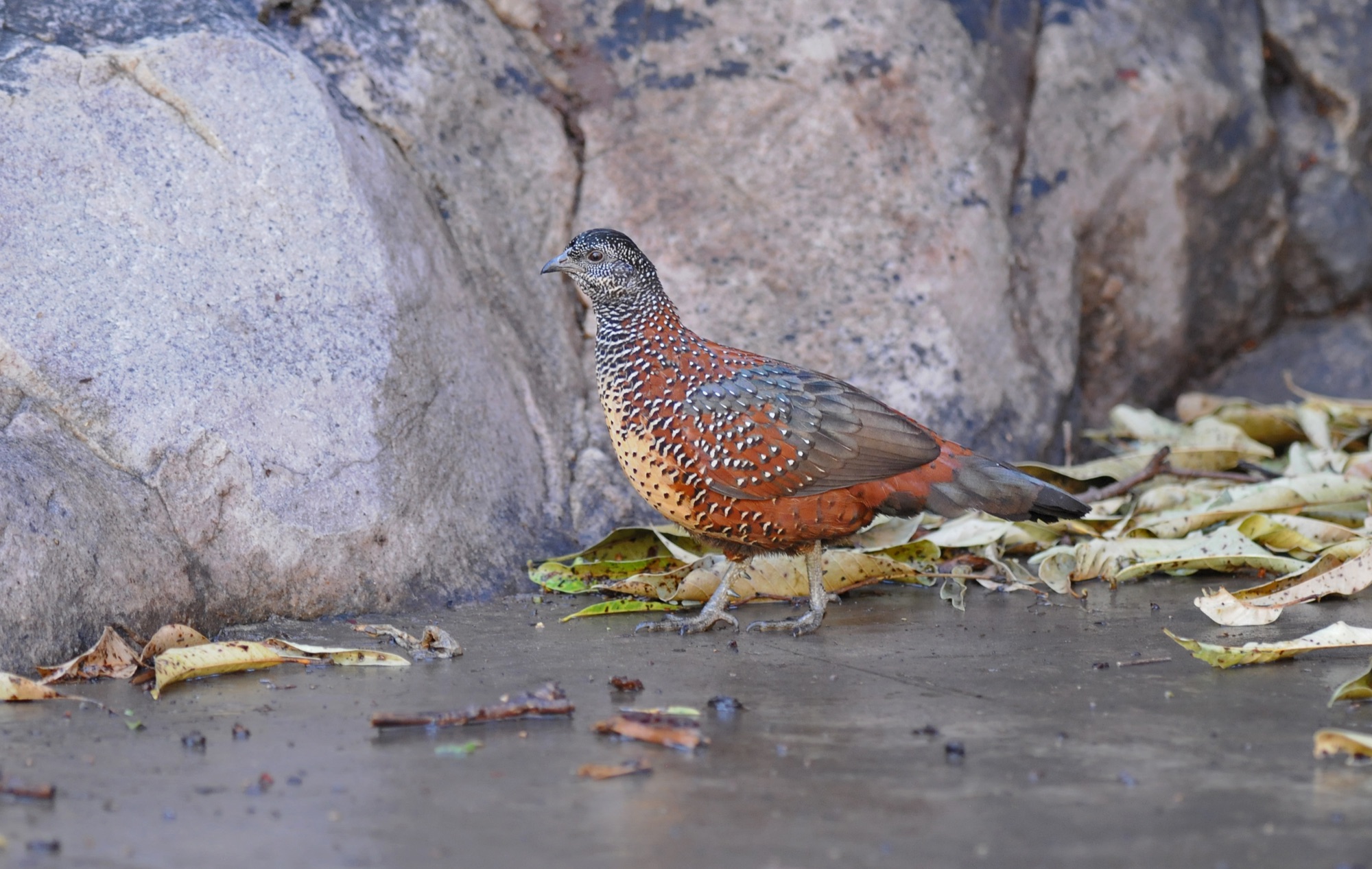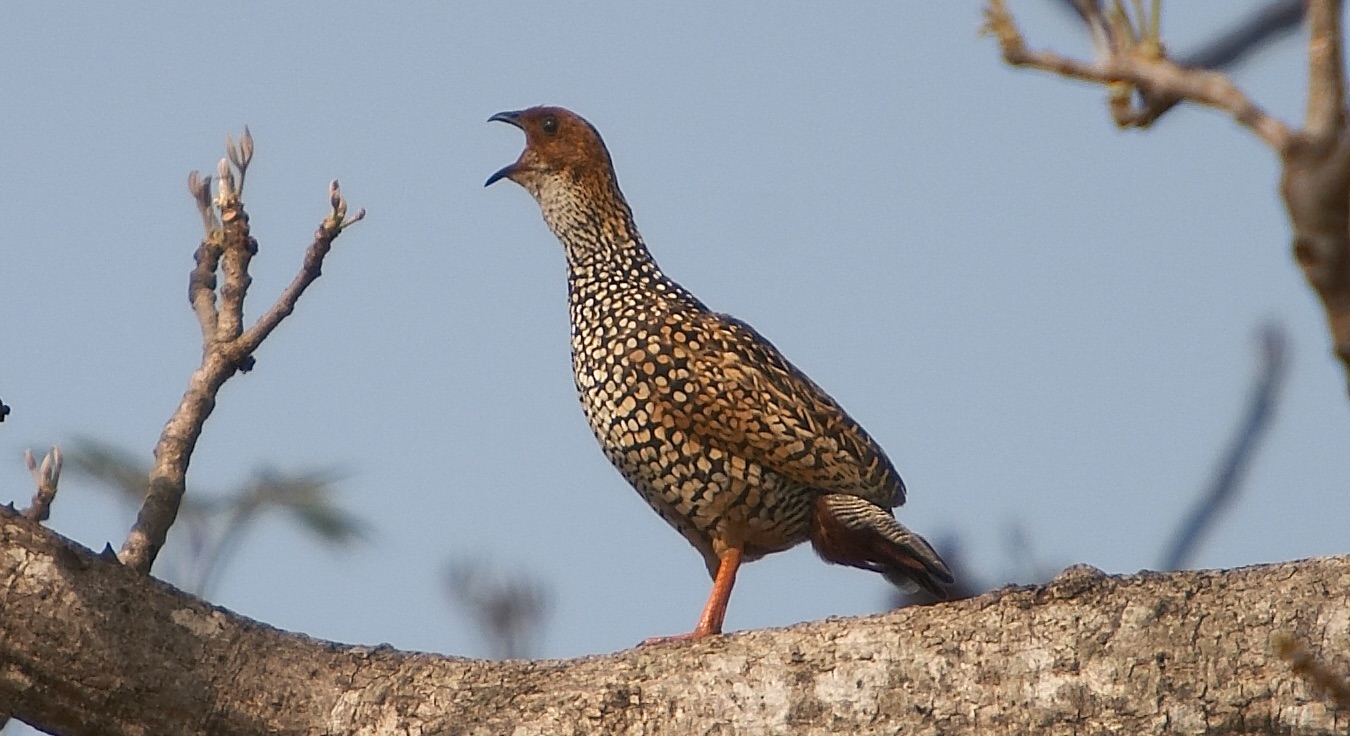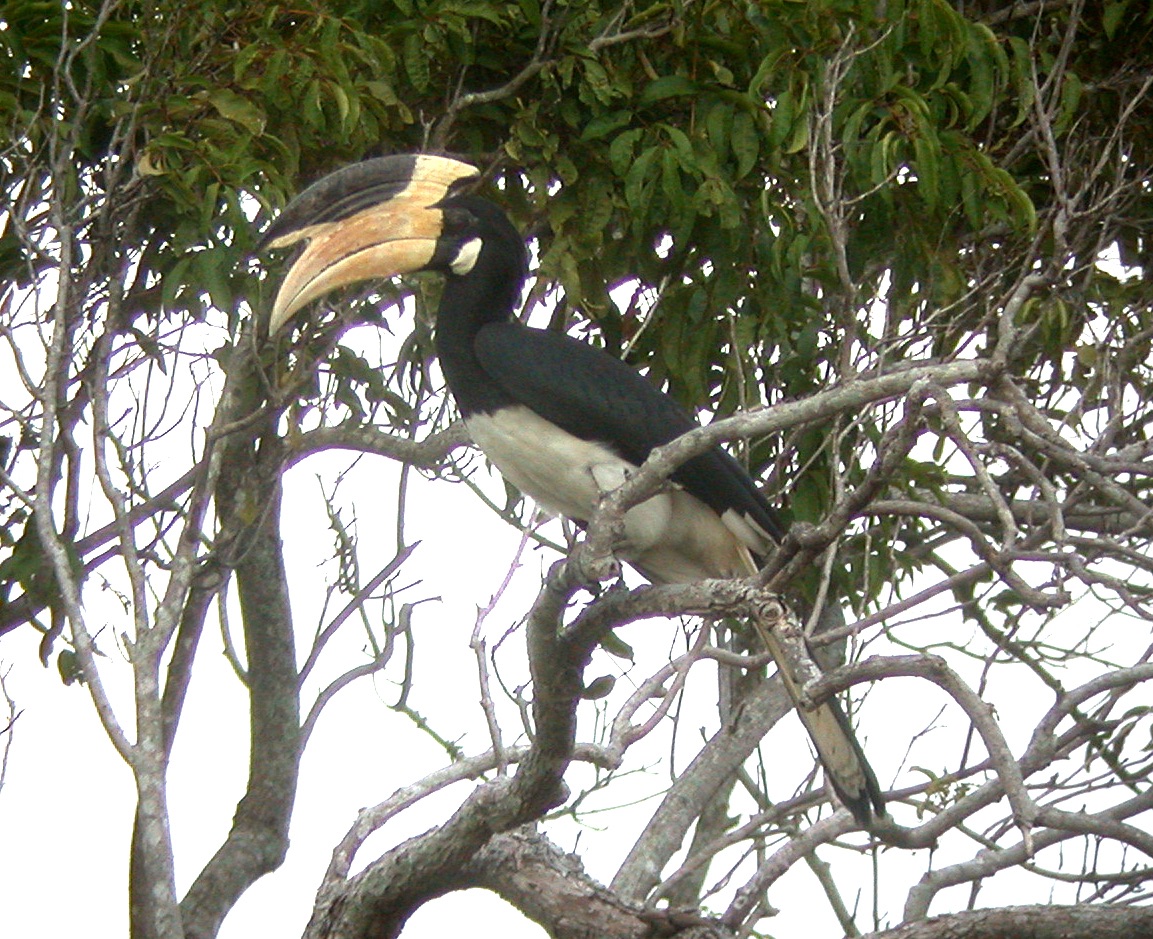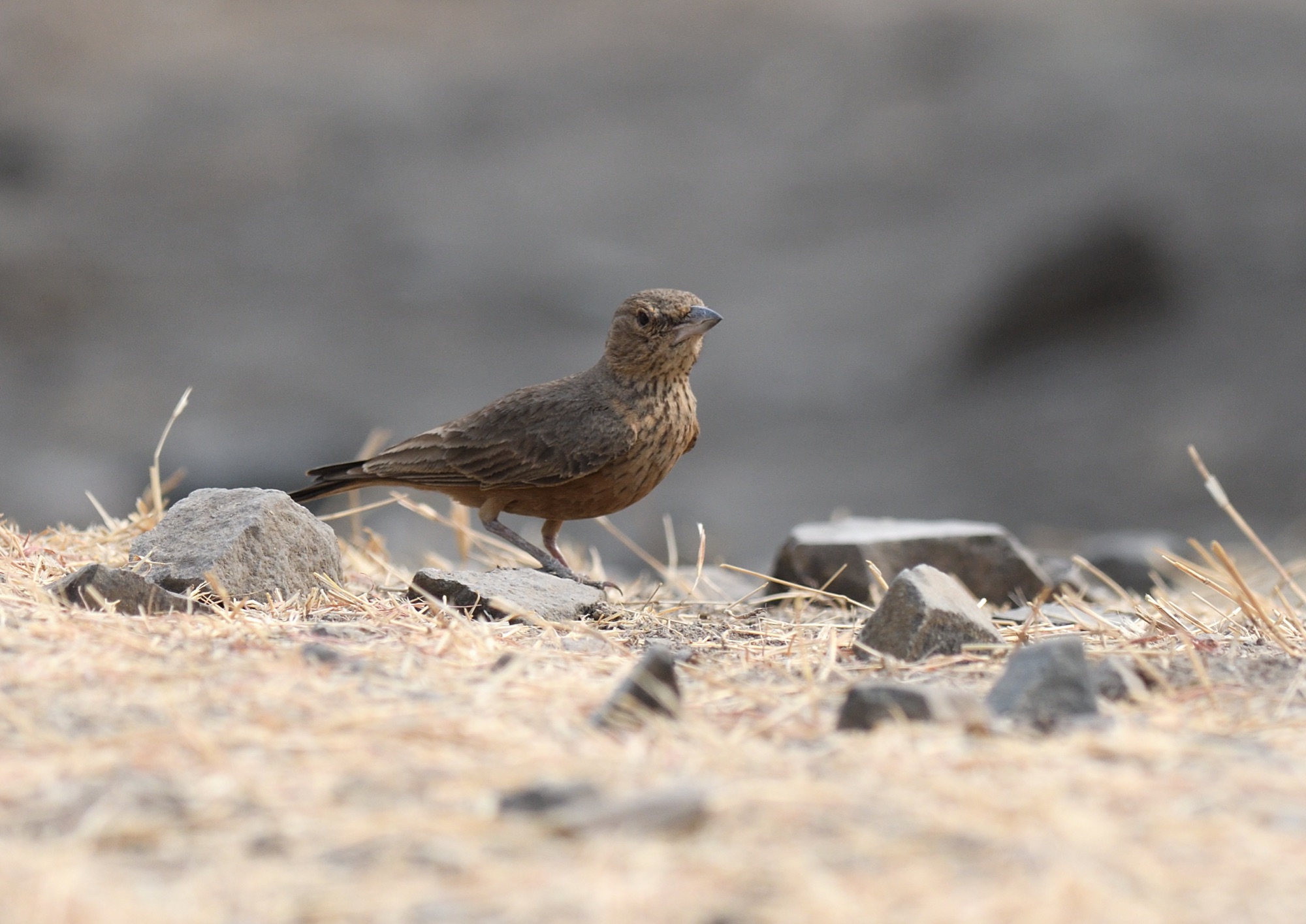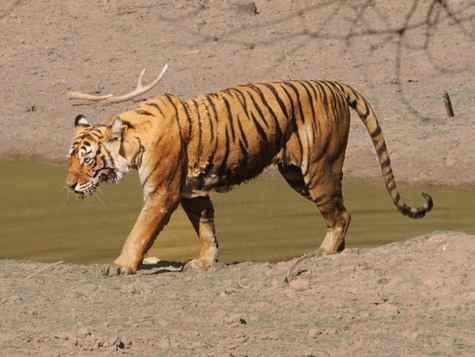INDIA - JUST TIGERS TOUR ITINERARY
Day 1 Arrival in Delhi - 1st December
Plan on arriving today in Delhi, India. Upon arrival you will be transferred to a nearby hotel where you will meet up with the rest of the group at dinner and can discuss the exciting adventure that awaits. If time permits we can pay an afternoon visit to Okhla Bird Sanctuary situated on the Yamuna River, This is a remarkable place where birds are numerous and easy to see and there will be quite a few species we definitely won’t encounter in central India and in particular we will search for White-tailed Stonechat, Striated Grassbird and Yellow-bellied Prinia. However, most of our attention will be drawn to the open water where huge flocks of familiar wildfowl also host the slightly more exotic Indian Spot-billed Duck and possibly Knob-billed Duck. A flock of Greater Flamingo’s are usually present here, along with Garganey, Bar-headed and Greylag Geese, whilst flocks of Brown-headed Gulls and smaller numbers of Steppe Gulls are very conspicuous. Along the water’s edge and in the marshes we can find Purple Heron, Glossy and Black-headed Ibis, Indian Peafowl, White-tailed Lapwing, Common Babbler, Pied Bushchat Graceful Prinia, Red Avadavat and Indian Silverbill. Sometimes in the drier areas there is Red-naped (Indian Black) Ibis, as well as Grey Francolin, Spotted Owlet, Yellow-footed Green-pigeon, Red Collared-dove, Purple Sunbird, Hume’s Warbler and Siberian Chiffchaff, whilst overhead there will be numerous Black and Black-eared Kites. This is a perfect way to begin our Indian adventure and we would hope to see around 80 species quite easily in just a couple of hours birding. Night in Delhi.
Day 2 Delhi - Jabalpur
Morning transfer to Delhi Airport and fly to Jabalpur. On arrival at Jabalpur we shall transfer to Bandhavgarh where we should arrive in plenty of time to take an afternoon jeep safari into the National Park. We will be based at the wonderful Monsoon Forest Lodge, a conservation-orientated establishment who have planted over 2,500 native trees over the past 5 years and where 70% of revenue goes back into the local economy. The eco-lodge comprises 10 cottages that merge naturally into the surrounding grassland and forest and is a wonderfully relaxing environment within which to spend our time here.
Days 3 – 5 Bandhavgarh National Park
We will follow a programme of early morning and late afternoon jeep safaris into the National Park for Tiger tracking and wildlife viewing by following a network of jeep tracks into the surrounding forest, with the warmest periods of the day spent around our wonderful lodge relaxing and taking short birding walks to explore the surrounding countryside. And what a place this is! Formerly the hunting reserve of the Maharajas of Rewa, the area still contains some evidence of its royal associations, most spectacular being the ruins of a huge hilltop fort which dominates the centre of the National Park. The habitat is mainly Sal forest, interspersed with tracts of mixed forest in the hills, and some expanses of native grassland and bamboo. It is rather arid here so the few pools and streams are always a good place to seek wildlife.
Although Tigers are undoubtedly the star attraction at Bandhavgarh, there is an impressive supporting cast of birds and among the 250+ species recorded here we can search for such delights as Painted Spurfowl, Red-headed, White-rumped and Indian Vultures, Changeable Hawk-Eagle, Bonelli's Eagle, Grey-headed Fish-Eagle, Brown Fish-Owl, Mottled Wood Owl, Jungle Owlet, Plum-headed Parakeet, Blue-bearded Bee-eater, Malabar Pied Hornbill, Indian Nuthatch, Greater Racket-tailed Drongo, Asian Paradise Flycatcher, Tawny-bellied and Puff-throated Babblers, White-capped Bunting and Olive-backed Pipit amongst others. Other mammals that reside here include Asiatic Leopard, Indian Wild Dog, Indian Fox, Golden Jackal, Sloth Bear, Spotted Deer, Chinkara, Chousingha, Wild Boar, Sambar, Indian Muntjac, Nilgai, Rhesus Macaque, Common Langur and Indian Hare. Nights at Monsoon Forest Lodge.
Day 6 Bandhavgarh - Kanha
After a final morning jeep safari we will have lunch and then set out on the drive to Kanha National Park, where we whould arrive later in the evening. Night at a wildlife resort tba.
Days 7 – 8 Kanha National Park
This wonderful reserve is a true wilderness, incorporating a wide variety of habitats from a crescent of hills up to 3,000 feet high, undulating grasslands, to stands of bamboo and dense Sal forest. The hills are cloaked with deciduous trees, whilst a perennial lake and several small pools provide year round drinking for a wide variety of resident mammals, and the mixture of river valleys and steep rocky escarpments provides a diverse range of habitats in which to search for our primary target – Bengal Tiger. By taking early morning and late afternoon jeep safaris into the park we will maximise our chances of seeing Tigers. As they are most active at these times, we have an outstanding chance of finding and observing them, often at very close quarters. There are also many other mammals to look for, and the number of deer here is quite staggering, but that also helps to explain why there is a healthy population of carnivores present! Immediately obvious will be Spotted Deer (or Chital), Nilgai and Sambar, with smaller numbers of Swamp Deer (or Barasingha), Gaur and Indian Muntjac (or Barking Deer). We should also see Wild Boar, Golden Jackal, Ruddy Mongoose, Common Langur and Rhesus Macaque, although we would have to be very lucky to catch a glimpse of a Leopard, Wild Dog (or Dhole), Sloth Bear or Jungle Cat. During our game drives we will have opportunity to see a strong supporting cast of bird species and as we drive through the forests we could find Jungle Bush-Quail, Red Spurfowl, Red Junglefowl, White-eyed Buzzard, Rufous and Streak-throated Woodpeckers, White-naped Flameback, Malabar Pied and Indian Grey Hornbills, Common Hawk-Cuckoo, Indian Scops-Owl, Jungle Owlet, Grey Nightjar, Oriental Turtle Dove, Emerald Dove, Blue-bearded Bee-Eater, Stork-billed Kingfisher, Golden-fronted and Jerdon’s Leafbirds, Large Cuckooshrike, Long-tailed Minivet, Blue-capped Rock-Thrush, White-bellied, Spangled and the very common Greater Racket-tailed Drongo, Asian Paradise-Flycatcher, Taiga, Red-breasted and Verditer Flycatchers, Black-lored Tit and Thick-billed Flowerpecker. Dense stands of bamboo inside the forests are attractive to species such as Black-naped Monarch, Tickell’s Blue Flycatcher, Brown-cheeked Fulvetta, White-rumped Shama, Puff-throated Babbler, Grey-breasted Prinia and the shy Indian Scimitar-Babbler. The extensive grasslands are dotted with numerous pools providing excellent habitat for Painted Francolin, Striated Heron, Sirkeer Malkoha, Pin-tailed and Greater Painted Snipes, Indian Stone-Curlew, Black Ibis, Black-necked Stork, Lesser Adjutant, the scarce Rufous-fronted Prinia, Jungle and Plain Prinias, Yellow-eyed Babbler, Indian Bushlark, and Red Avadavat. Meanwhile, there are often large flocks of hirundines which can include Red-rumped Swallow, Dusky Crag-Martin and sometimes Alpine Swift. As is often the case, there is usually an odd surprise or two, and Nick has previously seen Spot-bellied Eagle-Owl, White-tailed Rubythroat, Ultramarine Flycatcher, Grey Bushchat and Black-winged Cuckooshrike here, all species that usually winter far to the north.
Day 9 Jabalpur - Delhi
Morning transfer to Jabalpur airport to connect with a flight back to Delhi. Upon arrival in Delhi in the late afternoon we will transfer to an airport hotel for an overnight stay.
Day 10 End of Tour
.International flights back to the UK and conclusion of a wonderful tour.
All photos copyright Zoothera Birding unless otherwise stated.

